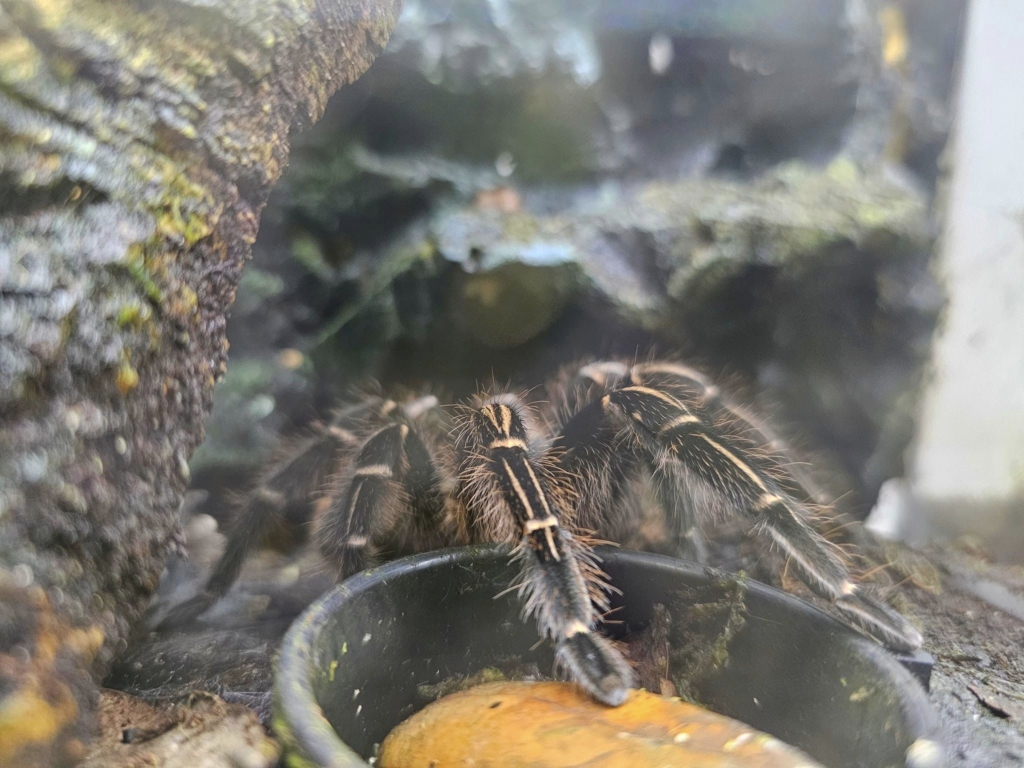Tarantulas
What Are Tarantulas?
Tarantulas are a group of large, hairy spiders belonging to the family Theraphosidae. Notably different from common spiders, tarantulas are known for their impressive size, with some species boasting leg spans of over 10 inches. They are found in a variety of environments across the globe, particularly in tropical, subtropical, and arid regions.
Myths vs. Facts
- Myth: Tarantulas are deadly to humans.
- Fact: While tarantulas possess venom, it is typically not harmful to humans, being akin to a bee sting in terms of toxicity. Fatalities from tarantula bites are exceedingly rare.
- Myth: Tarantulas are aggressive.
- Fact: Most tarantula species are quite docile and will often choose to retreat rather than confront a threat. However, their behavior can vary by species.
- Myth: All tarantulas are huge.
- Fact: While some species are indeed large, tarantulas come in various sizes. Some species, like the Mexican Redknee, are more modest in size.
- Myth: Tarantulas can jump great distances.
- Fact: Contrary to popular belief, tarantulas are not known for jumping. They are ground-dwelling spiders that primarily move by walking.
- Myth: Tarantulas use their webs to trap prey.
- Fact: Unlike many spiders, tarantulas do not use webs to catch prey. They are hunters that actively pursue or ambush their prey.
- Interesting Fact: Tarantulas can regenerate lost limbs. If a tarantula loses a leg, it has the capability to grow it back during subsequent molts.
- Interesting Fact: Some tarantula species exhibit sexual dimorphism, where males and females have distinctly different appearances. Males often have longer, thinner legs and are more lightly built than females.
- Interesting Fact: Tarantulas have a unique defense mechanism: urticating hairs. These are special hairs that some species can release when threatened, which can cause irritation and discomfort to predators.

Why Tarantulas Make Great Pets
Tarantulas are often overlooked when it comes to choosing a pet, but they offer a unique and fascinating experience for the right kind of pet owner. Here’s why these creatures are considered excellent companions:
Low Maintenance
Easy Care: Unlike many common pets, tarantulas don’t require daily feeding or walks. This makes them an excellent choice for people with busy lifestyles or those who travel frequently.
Space Efficient: Tarantulas don’t need a lot of space. A properly sized terrarium can fit comfortably in small apartments or spaces.
Long Lifespan
- Years of Companionship: Certain species of tarantulas can live for decades, especially females. This long lifespan allows for a prolonged and enriching relationship with your pet.
Unique and Educational
Fascinating Creatures: Watching a tarantula’s behaviors and habits can be captivating and educational. They offer a window into a world quite different from our own.
Learning Opportunity: Caring for a tarantula can teach responsibility and respect for nature, making them excellent for educational environments or as a way to introduce children to the wonders of biology and zoology.
Quiet and Clean
No Noise: Tarantulas are silent creatures. They don’t bark, chirp, or meow, which is ideal for a peaceful home environment or for people sensitive to noise.
Minimal Mess: These pets are tidy and don’t create the mess that some other pets might. Their enclosures are simple to maintain, requiring only occasional cleaning.
Therapeutic Presence
Stress Relief: Watching a tarantula calmly navigate its enclosure can be a soothing and meditative experience, providing a unique form of stress relief.
Unconventional Beauty: The various species come in an array of patterns and colors, offering aesthetic pleasure to those who appreciate the more exotic side of nature.
Tarantula Care 101
Owning a tarantula can be a uniquely rewarding experience, but it also comes with specific responsibilities. Proper care ensures the health and happiness of your spider, and here’s how you can achieve it:
Housing Your Tarantula
Terrarium Size and Type: The size of the terrarium depends on the species of tarantula. A general rule is that the enclosure should be three times the leg span of the spider in width, and the height should be tall enough to prevent injury if the spider climbs and falls. Glass or plastic terrariums with secure lids are ideal.
Substrate: Use a substrate like coconut fiber, peat moss, or vermiculite. The substrate should be deep enough for burrowing species to dig.
Temperature and Humidity: Most tarantulas thrive in temperatures between 75-85°F. Humidity needs vary depending on the species, with tropical species requiring higher humidity (70-80%) and desert species needing less (40-50%). Use a reliable thermometer and hygrometer to monitor these conditions.
Hiding Places: Provide hiding spots like cork bark, plant pots, or hollow logs. These give the tarantula a sense of security.
Diet and Feeding
What to Feed: Tarantulas primarily eat live insects like crickets, roaches, and mealworms. The size of the prey should be appropriate for the size of the spider.
How Often to Feed: Adult tarantulas can be fed once a week, while younger ones may need to eat more frequently. Observe your tarantula’s response to feeding and adjust accordingly.
Water: Always provide a shallow dish of fresh water. Ensure it’s shallow to prevent drowning.
Handling and Interaction
To Handle or Not: Handling is generally not recommended as tarantulas can become stressed, and falls can be fatal. If you must handle your tarantula, do so gently and near the ground.
Understanding Their Body Language: Recognizing signs of stress or aggression, like rearing up or showing fangs, is crucial for safe interaction.
Health and Wellbeing
Molting: Tarantulas shed their exoskeletons as they grow. During this time, they may appear lethargic and stop eating. Ensure a stress-free environment and refrain from handling during molts.
Common Health Issues: Watch for signs of dehydration, injury, or parasites. A healthy tarantula is active with a plump abdomen and vibrant color.
Veterinary Care: Consult a vet specializing in exotic pets for any health concerns.